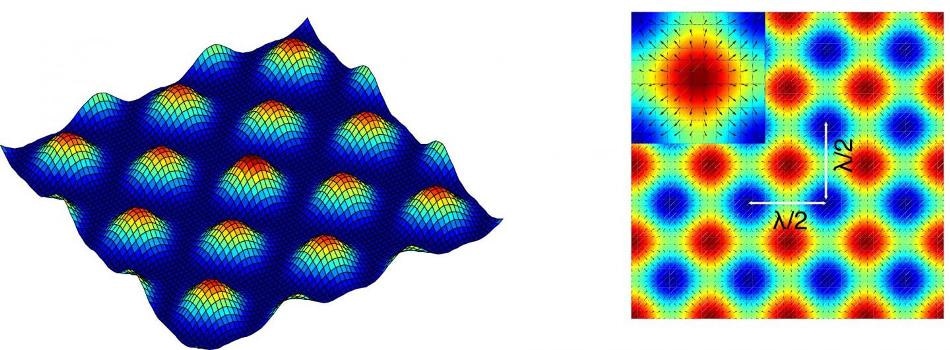Oct 7 2016
 Ultrasonic patterning is shown. (CREDIT: University of Bristol)
Ultrasonic patterning is shown. (CREDIT: University of Bristol)
Ultrasonic forces to correctly pattern several microscopic water-based droplets have been used by researchers at the University of Bristol. Each droplet can be designed to conduct a biochemical experiment, which could lead to the development of highly efficient lab-on-a-chip devices that can then be applied in future applications involving clinical diagnostics and drug discovery.
In a recent study published in Nature Communications, an interdisciplinary team from University of Bristol's departments of chemistry, physics and engineering, have demonstrated a non-contact technique to design chemically encoded aqueous droplets into a 2D array under water.
The technique applies ultrasonic forces integrated with droplet technology to spontaneously produce a very uniform pattern of low surface tension functional water-based droplets. The arrays can be assumed to be a new type of highly parallel platform for conducting high-throughput analysis in water for drug discovery, protein crystallization, and clinical diagnostics.
The ability to carry out thousands of microscale experiments concurrently will pave the way for more efficient lab-on-a-chip technologies.
Existing patterning technologies require water and oil mixtures or exposure on a dry surface to realize arrays of high surface tension droplets. This means that several water-based biochemical reactions are difficult to perform. The new technique circumvents these issues by patterning the water-based droplets within a water-filled chamber, which is subjected to an acoustic standing wave.
By manipulating the composition of the droplets and producing the acoustic field, the team has created uniform arrays of droplets or droplet aggregates organized in square lattices. The droplet size, surface-attachment properties, and spacing could be effectively controlled and were reversible. The droplets can also be loaded with enzymes, proteins, nucleotides, polysaccharides, DNA, nanoparticles or microparticles, and used in chemical reactions at small-scale.
As the coavervate droplets are formed they are gripped by the ultrasonic forces and patterned. The uniformity of the droplets is amazing. I'm convinced this technology will have many applications in the next generation of lab-on-a-chip applications.
Bruce Drinkwater, Professor of Ultrasonics, University of Bristol
Professor Stephen Mann, from Bristol Centre for Protolife Research, added: "The acoustic patterning method significantly extends the scope of the current micro-array technologies. We should now be able to develop devices capable of sustaining chemical signals between the droplets as well as enabling spatial and temporal responses to changing conditions in the external environment. This will allow us to exploit the acoustically trapped liquid droplets as a 2D community of spatially organized membrane-free protocells."